What are the characteristics of Sidamo Coffee beans? flavor description of Sidamo Flower Kui Coffee beans
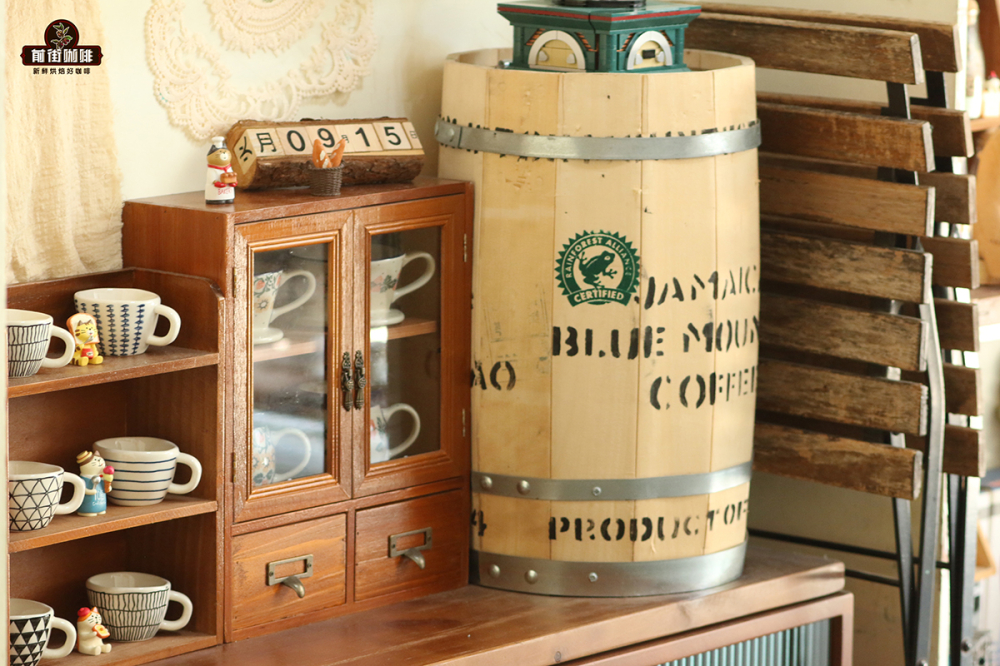
Ethiopian coffee has always been synonymous with fine coffee. As the most famous birthplace of coffee in the world, Ethiopia occupies a light position in the global coffee. Qianjie learned that most of Ethiopia's coffee is based on the producing area as the name of the coffee. For example, the coffee from the Yega Sheffield area is called the Yegashifi coffee bean, and the coffee bean from the Sidamo area is called the Sidamo coffee bean.
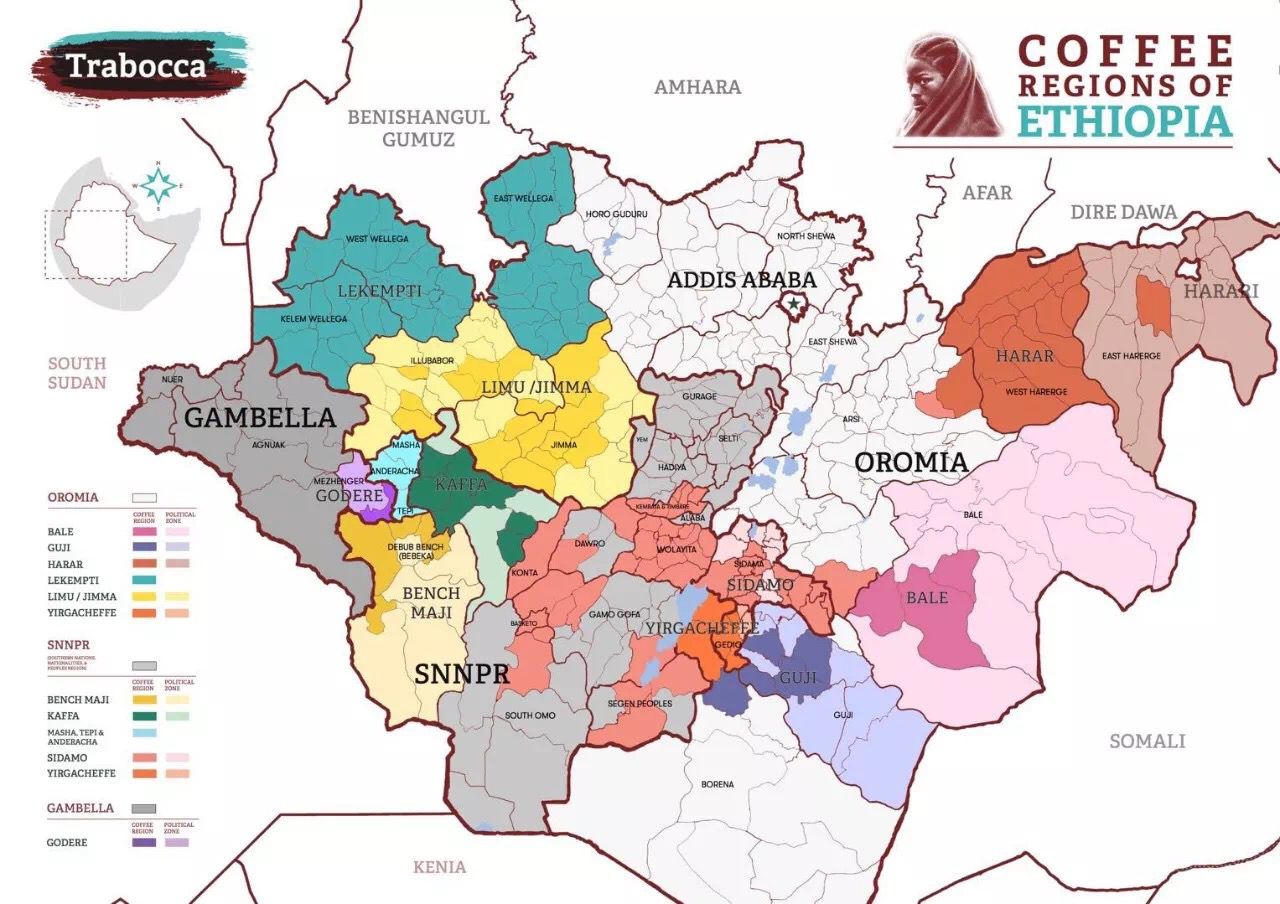
Coffee growing areas in Ethiopia are relatively high above sea level. For example, the famous Rose Summer Village grows rose summer varieties at an altitude of more than 1900 meters, with a maximum of more than 2100 meters. Areas like Panamanian Jade Manor planting rose summer varieties are generally between 1600 and 1800 meters above sea level, and high altitude will slow the growth of coffee trees and facilitate the accumulation of matter in coffee beans. So the flavor of Sidamo coffee grown at high altitude is very good.
According to Qianjie, the industry in the Sidamo coffee producing area is generally agriculture, with high altitude, plenty of sunshine and abundant rainfall. In addition, the coffee beans in Sidamo are fertilized by the withered leaves of surrounding trees or the residual roots of plants. The original ecological growth environment created the flavor characteristics of Sidamo coffee.
Among them, the two most famous coffee growing areas in Sidamo are GUji and West Arsi. Guji producing area is located in the southeast of Yega Xuefei producing area, the terrain is mainly towering mountains, valleys and plains, fertile black soil. At high altitude, there is a large temperature difference between day and night, so the Sidamo coffee produced here is very characteristic.
Since Qianjie mentioned the Guji producing area, it had to mention the sub-producing area of the Guji producing area-Humbela. There is a Humbela coffee famous for its strawberry cream flavor. Chinese raw bean merchants have given this Humbela coffee the name "Sakuran" to show that they have high hopes for this coffee. Qianjie Coffee has also been put on the shelves of this Huakui coffee bean, which has a very mellow taste in addition to the rich floral aroma of Sidamo coffee.
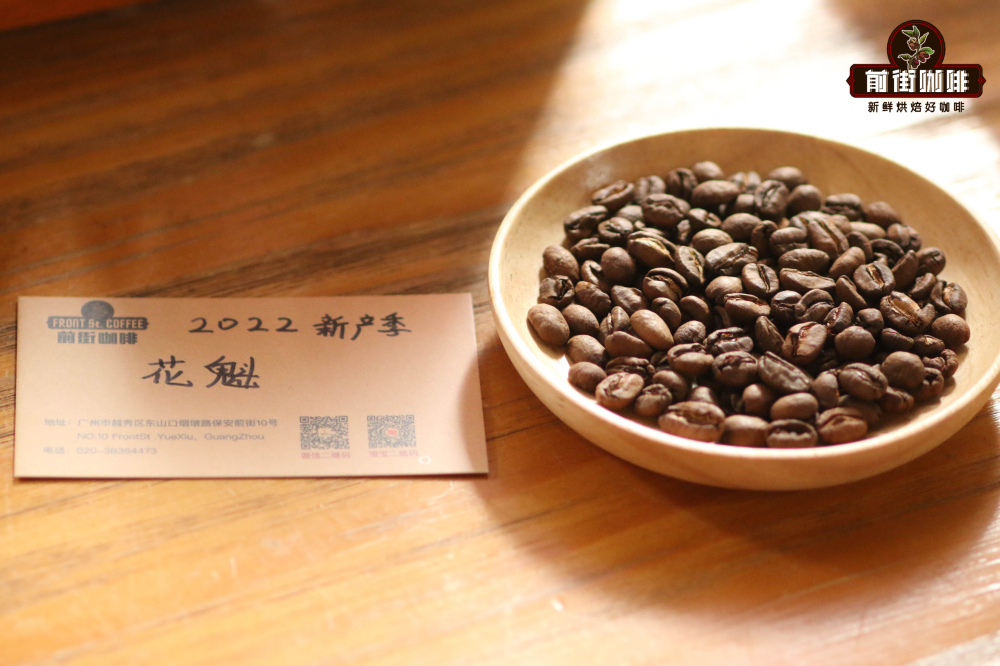
Qianjie Coffee this year's Sakuran is also sun-treated. Sun-treated and water-washed coffee beans have their own characteristics. If you like coffee beans that taste clean and sour, you can give priority to water-washed coffee in Africa. For example, the Yega Xuefei producing area in Ethiopia is often washed with water, and the fruit dingding coffee on the front street is washed with water.
The sun drying method in the Sidamo producing area is very fastidious. Only ripe coffee fruits are picked during the coffee harvest period, and the picked coffee fruits are uniform in size, similar in maturity and free of other impurities. In the process of treatment, strict hand selection should be carried out to remove the defective beans, and then the coffee red fruit should be laid on a high wooden frame or the whole scaffolding to make the sun, so as to prevent the coffee fruit from mildew or soil during the drying process. In the process of exposure, it will constantly turn to ensure that the coffee beans can be evenly exposed to water; every three to five days, farmers will manually screen out the defective and moldy beans. Wait for the peel to dry and harden, and then use a sheller to remove the hard peel. After obtaining the raw coffee beans, the farmer will do one last screening in pursuit of the perfect taste.
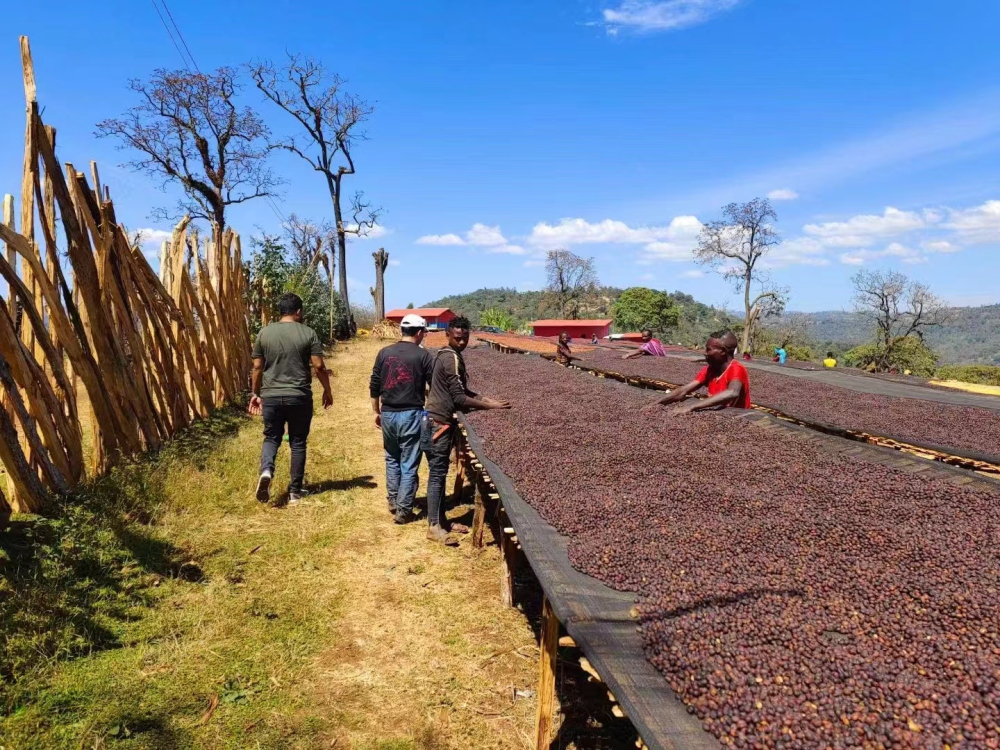
And another producing area of Sidamo is the West Alsi producing area, which is located in the western part of the Sidamo producing area, with an elevation of 1900-2200 meters above sea level. Generally speaking, the coffee cultivation in Ethiopia is mostly small farmers, and the planting model in West Alsi is also small farmers. They generally take the family as the model, and they do not need to pay high labor costs. They can control the quality of coffee very well. And the processing station usually pays extra for ripe red cherries, which greatly increases the enthusiasm of coffee farmers. Qianjie is also on the shelves of a coffee bean from the Arsi area of Cedar Moses, using the sun treatment commonly used in the Sidamo area.
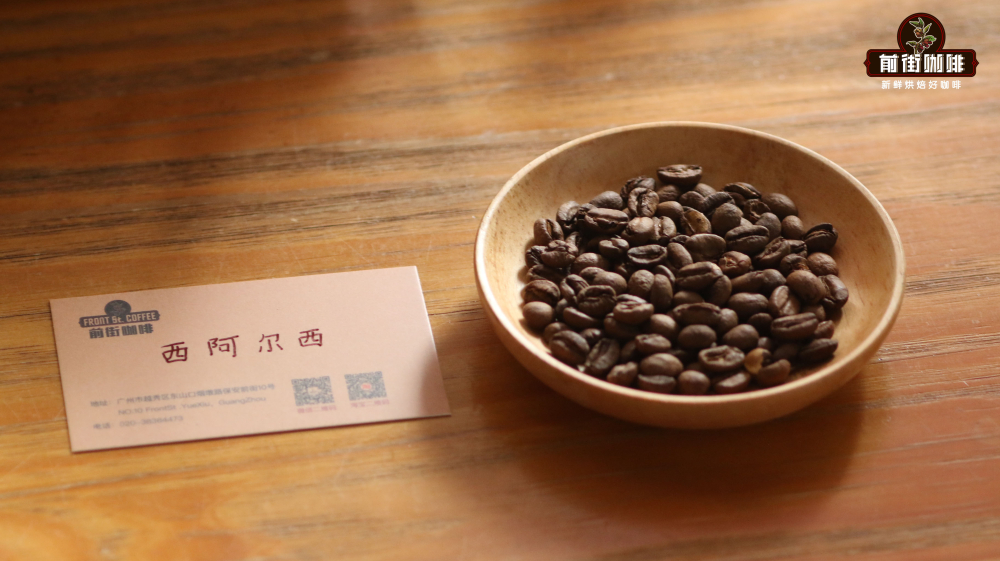
Since the two well-known Guji and West Alsi producing areas in Sidamo are sun-treated, will the coffee flavors of these two places be the same? Or does it have its own characteristics? Qianjie coffee is as curious as everyone else, so we test and brew the coffee beans from Guji and West Arsi. In general, when roasting Ethiopian coffee beans, Qianjie generally uses shallow roasting to highlight the acidity and flower and fruit aroma of African beans, plus in order to heat the bean surface and core evenly, Qianjie coffee will appropriately extend the time when baking this bean.
The barista in front street uses the 200ml standard cup to test the bowl. With the standard sieve 20, the grinding degree is 70% Mel 75%, the powder quantity is 11.3 g, and the water temperature is 94 degrees Celsius. First grind and smell the dried incense. Then fill the bowl with water and confirm the wet fragrance. After 4 minutes, the residue was broken and the flavor was identified. The dry aroma of Huakui coffee beans tends to citrus and berry aroma, while the wet aroma is blackcurrant and rose flavor. On the other hand, the dry aroma of Arsi coffee beans is berry, while the wet aroma is the sweetness of jam.
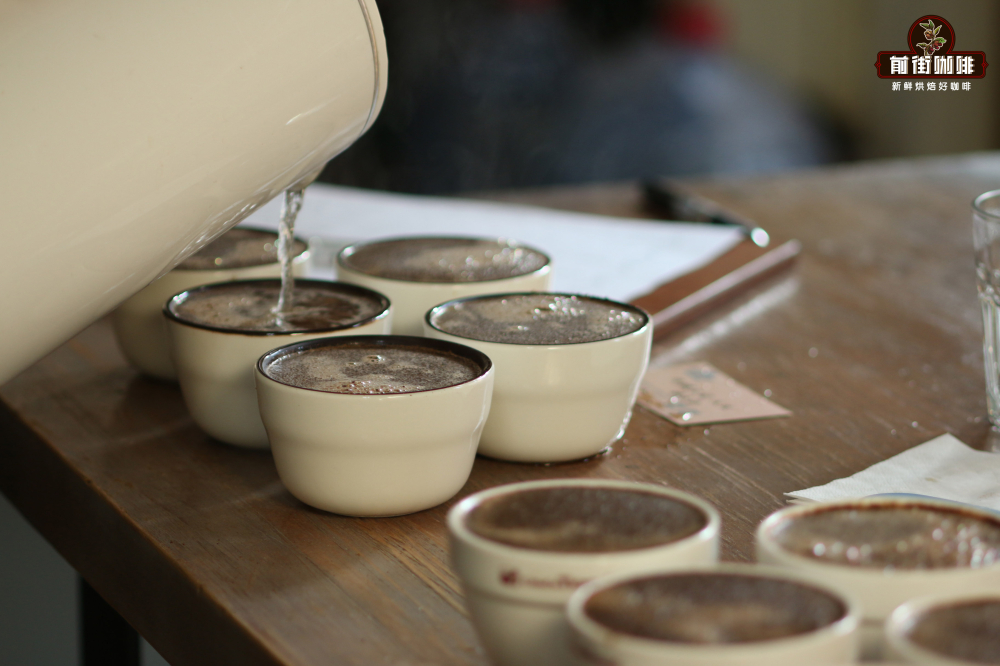
After the test of Qianjie cup, the brewing experiment was carried out for these two kinds of Sidamo coffee. The brewing and cooking parameters are as follows: using Hario V60 filter cup, 90 ℃ water temperature, 15 g powder quantity, 1:15 powder-water ratio, and medium and fine grinding degree (80% pass rate of Chinese standard No. 20 sieve). Use the three-stage brewing method commonly used in front street coffee, which is a very simple hand brewing method. You can simply learn this hand brewing technique at home to make a simple and delicious cup of coffee. First of all, after you get the coffee utensils you need, you can follow the front street to make coffee.
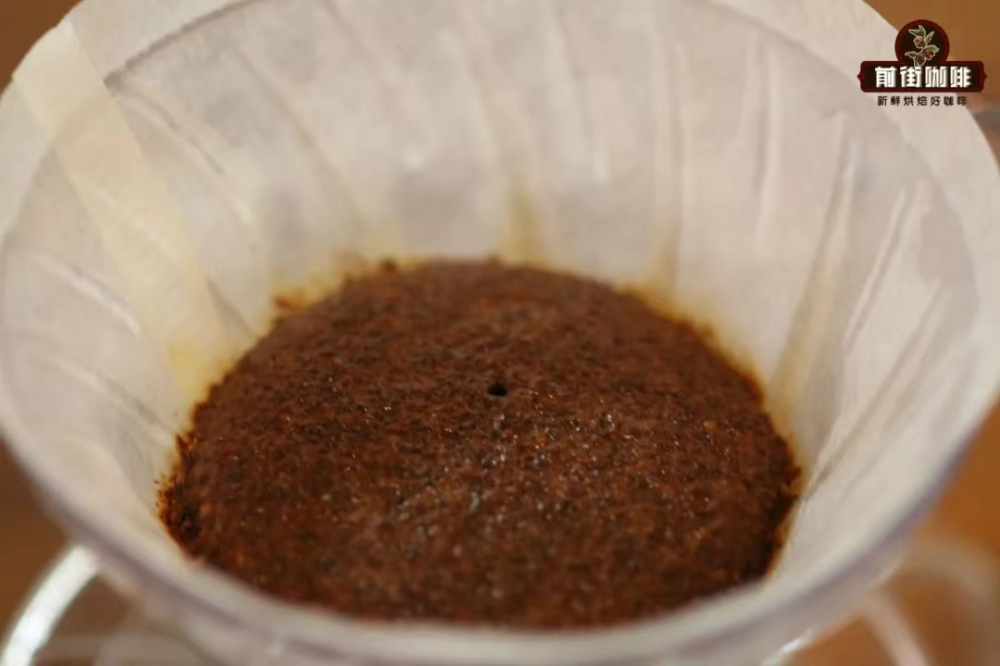
The first step, first with 30 grams of water for steaming, in the water injection do not use too large water flow, otherwise the coffee powder will be washed away, can not play the role of steaming. When pouring 30 grams of water, the time is exactly 10 seconds, then wait 20 seconds, when the total time reaches 30 seconds, you can proceed to the second step of brewing coffee. Then slowly inject 125 grams of water from the center to the outside with a small flow of water, which takes a total of about one minute. Then after waiting for the powder layer to drop, you can inject water again. The third step is to inject water again, when the total water reaches 225 grams, the time is about two minutes, then the action of water injection can be stopped.
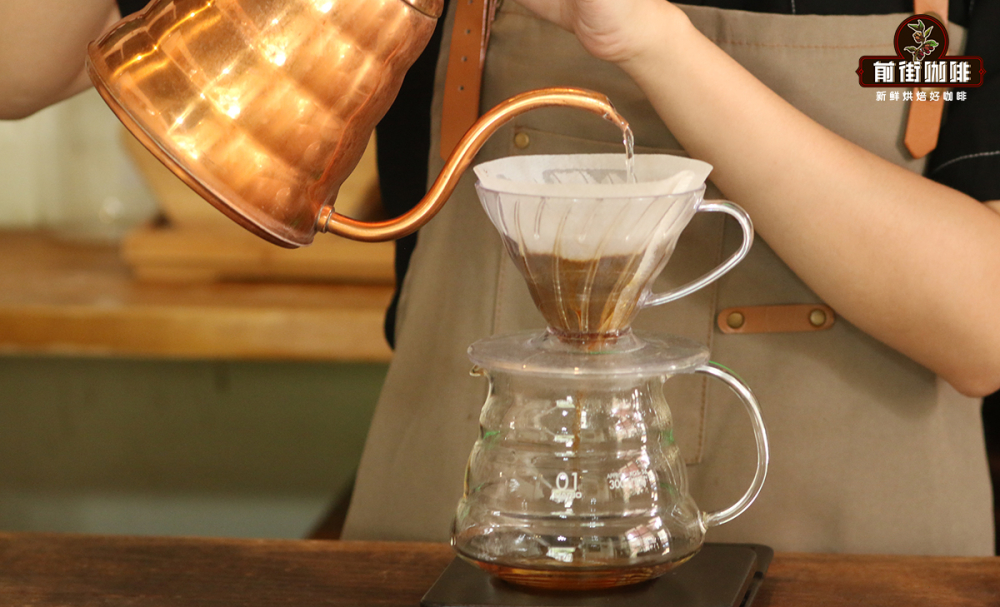
The next step is to wait for the coffee liquid of the filter cup to flow into the next pot, then you can remove the filter cup. But it's not over yet. The last action is to shake the pot containing the coffee liquid evenly, so that the concentration of the coffee liquid is evenly mixed together, and you can drink a delicious cup of coffee!
After cup testing and brewing in Qianjie, it is found that Huakui coffee beans have the aroma of almonds at high temperature. after cooling slowly, the berries are sour and sweet, blackcurrant juice, honey aftertaste and long-lasting sweetness. Arsi coffee beans taste like berry juice at high temperatures, with the aftertaste of plums, nectarines, mangoes and honey. As can be seen from these two types of coffee, Sidamo coffee is characterized by a strong fruity aroma and a strong sense of juice.
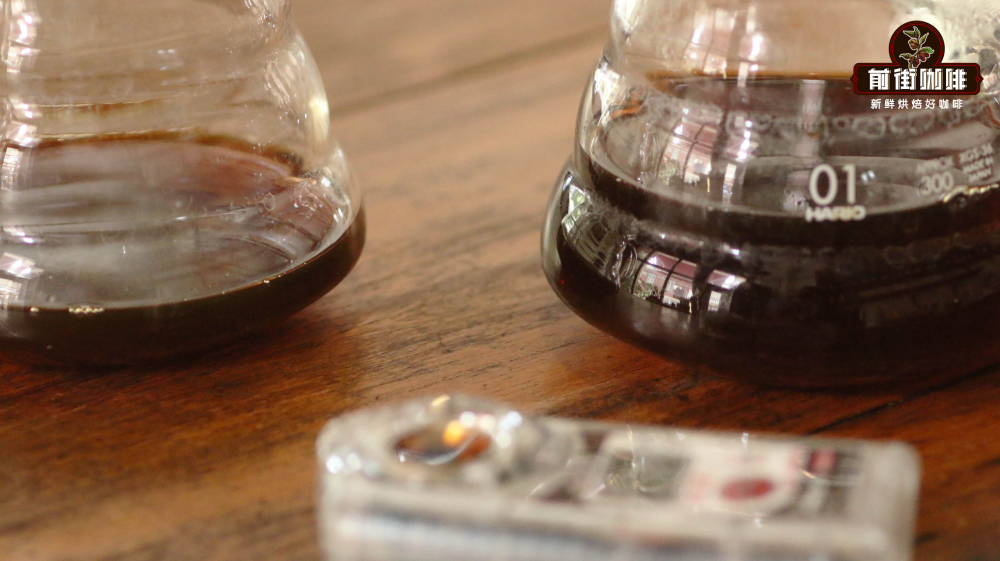
Professional coffee knowledge exchange more coffee bean information please follow the coffee workshop (Wechat official account cafe_style) more boutique coffee beans please add private Wechat Qianjie coffee, WeChat: qjcoffeex
Important Notice :
前街咖啡 FrontStreet Coffee has moved to new addredd:
FrontStreet Coffee Address: 315,Donghua East Road,GuangZhou
Tel:020 38364473
- Prev

What kind of coffee is Sidamo? Is Sidamo Sakura black coffee? introduction to the varieties of Sakura coffee beans in the producing area.
Professional baristas exchange please follow Coffee Workshop (Wechat official account cafe_style) Sidamo sidamo Ethiopia Sidamo is a type of single origin that grows in Arabica Coffee in Sidamo Province, Ethiopia. Like coffee in most African countries, Sidamo, Ethiopia
- Next
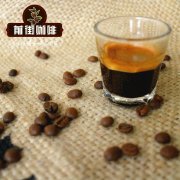
How about iron pickup coffee beans? How about Yunnan Tieka coffee?
Professional barista exchanges please pay attention to the coffee workshop (Wechat official account cafe_style) Yunnan coffee due to the unique geographical environment and climatic conditions, formed a strong but not bitter, fragrant but not strong, with a little fruit flavor of the unique flavor, world-class coffee experts evaluation is the world's good coffee, its cultivation technology, per unit yield is also world-class. The variation of Arabian species of Coffee in Yunnan
Related
- Detailed explanation of Jadeite planting Land in Panamanian Jadeite Manor introduction to the grading system of Jadeite competitive bidding, Red bid, Green bid and Rose Summer
- Story of Coffee planting in Brenka region of Costa Rica Stonehenge Manor anaerobic heavy honey treatment of flavor mouth
- What's on the barrel of Blue Mountain Coffee beans?
- Can American coffee also pull flowers? How to use hot American style to pull out a good-looking pattern?
- Can you make a cold extract with coffee beans? What is the right proportion for cold-extracted coffee formula?
- Indonesian PWN Gold Mandrine Coffee Origin Features Flavor How to Chong? Mandolin coffee is American.
- A brief introduction to the flavor characteristics of Brazilian yellow bourbon coffee beans
- What is the effect of different water quality on the flavor of cold-extracted coffee? What kind of water is best for brewing coffee?
- Why do you think of Rose Summer whenever you mention Panamanian coffee?
- Introduction to the characteristics of authentic blue mountain coffee bean producing areas? What is the CIB Coffee Authority in Jamaica?

